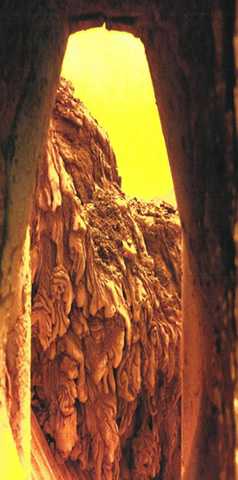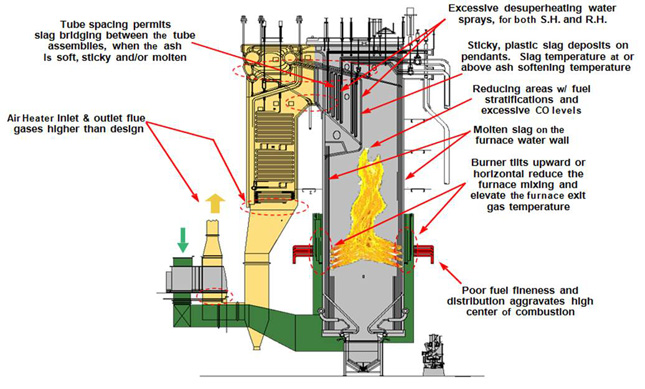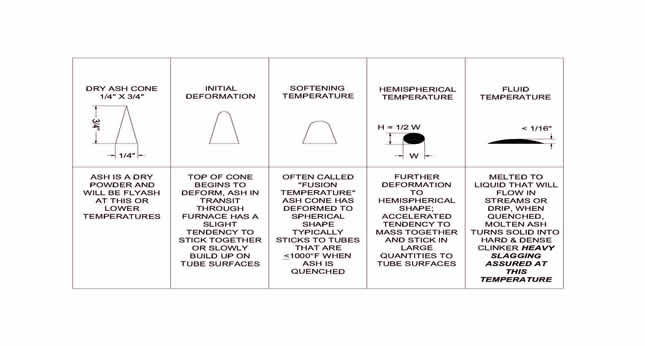- Home
- About Us
- Boiler Testing & Optimization
- Natural Gas Fired Boilers
- SCR Testing, AIG Tuning and Ammonia Slip (NH3) testing
- Specialized Boiler Tuning & Testing
- Pulverizer Performance & Capacity Improvements
- Pulverizer, Fan & Auxiliary Equipment Testing
- Comprehensive Boiler Inspections
- Air Emissions Testing
- Volumetric Flyash Testing
- NOx Reduction Program
- HVT Gas Sampling
- Air Flow Measurement Devices
- Comprehensive Lab & Tech Services
- Operator Training Program
- Equipment Sales
- Heat Rate Improvements
- Troubleshooting
- Boiler Slagging
- Pulverizer Fire or Explosions
- Pulverizer Vibrations Issues (Rumbling)
- Plugged Burner Lines
- Flame Instability
- Steam Temperature Control
- Reduced Unit Capacity
- Fireside Corrosion
- High Flyash LOI’s
- High Stack Opacity
- Raw Coal Spillage
- Pulverizer Performance and NOx Emissions
- Pulverizer Fineness
- SCR Catalyst Testing
- Environmental Testing
- Technical Resources
- Contact Us

Boiler Slagging
Slagging Propensity
The root cause of furnace slagging is actual very simple, slagging will occur if furnace exit gas temperatures (F.E.G.T.) exceeds the fusion temperature of ash from the coal being fired. To ensure operation without slagging, we typically recommend that F.E.G.T. be 100°F to 150°F below the ash softening temperature. Higher fineness, proper primary (pulverizer) airflow and good fuel balance reduce FEGT by allowing combustion to complete lower in the furnace. When combustion is completed lower in the furnace, the waterwalls absorb a higher amount of total heat release by the fuel and FEGT is reduced. Reducing ash fusion temperatures are always lower than those in an Oxidizing atmosphere; a reducing atmosphere is defined as any point within the furnace cavity in which the available excess oxygen content is < 0.5%. Poor fuel balance resulting from poor fineness can result in areas of reducing atmosphere in the furnace, this will result in localized areas where ash melts into a slag, due to lower melting points caused by a reducing atmosphere. Poor fineness is also frequently responsible for higher than desired Reheat or Superheat De- Superheating Spray Flows, heat that is not absorbed by the waterwalls must be absorbed the superheater or reheater. Additional heat absorbed by the superheat or reheater will then have to be offset by de-superheating spray flow. |
 |


![]()
Boiler Slagging
Pulverizer Fire and Explosions
Pulverizer Vibration Issues
Reduced Unit Capacity
![]()
Click here for ICT's 5th Edition Quick Reference Guide
![]()
20 tips to help prevent slagging When firing
PRB Coal
Achieving Optimum Pulverizer Performance
ASME Coal Sampling Procedure
![]()
Innovative Combustion Technologies, Inc. is New Sales Agent for Loesche Energy Systems, Ltd.
EPA extends public comment period on proposed MATS reconsideration
A recent Power Magazine article highlights a presentation given by ICT President Richard Storm to the Asian SBCUG meeting in Hong Kong.
